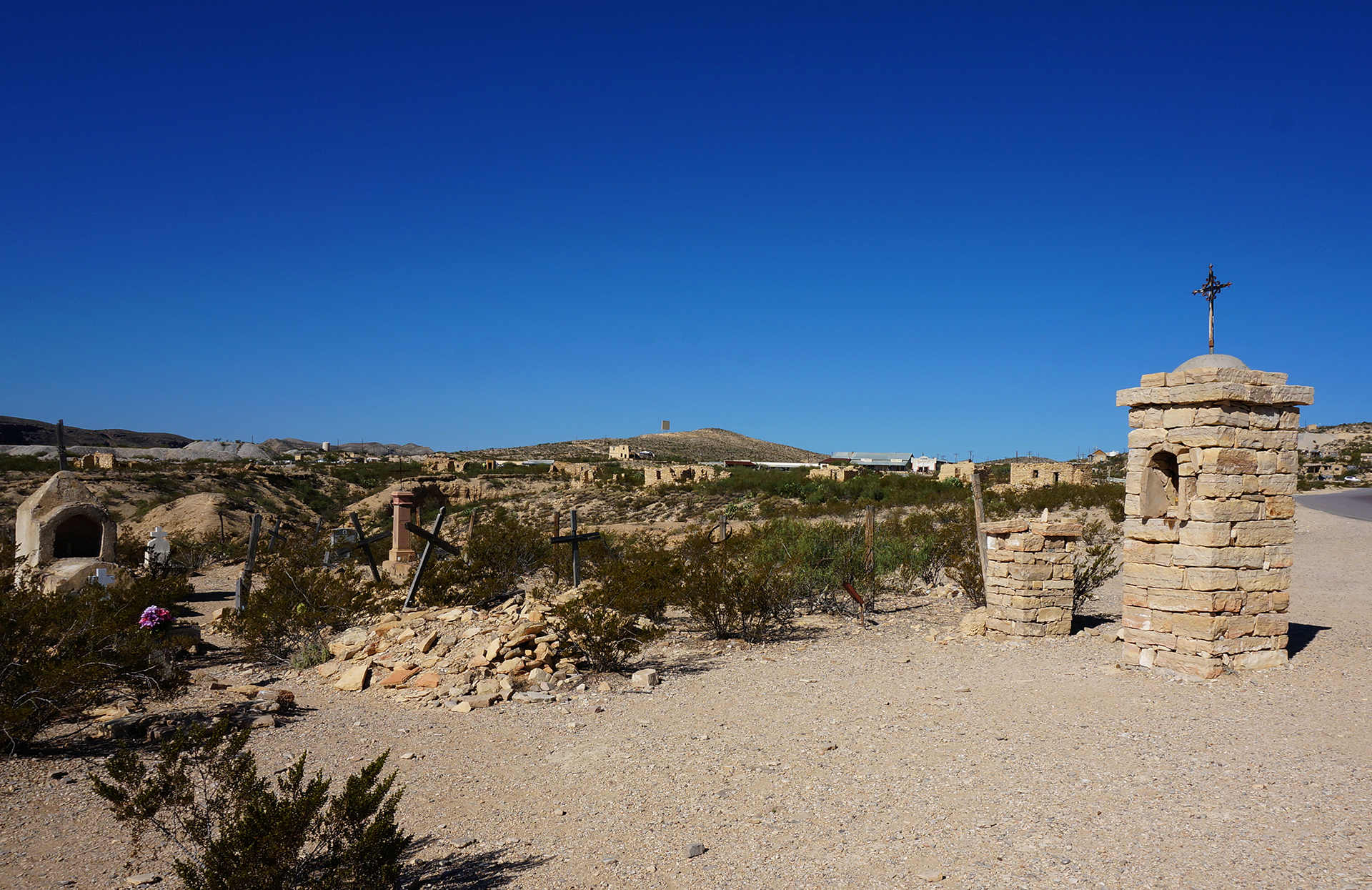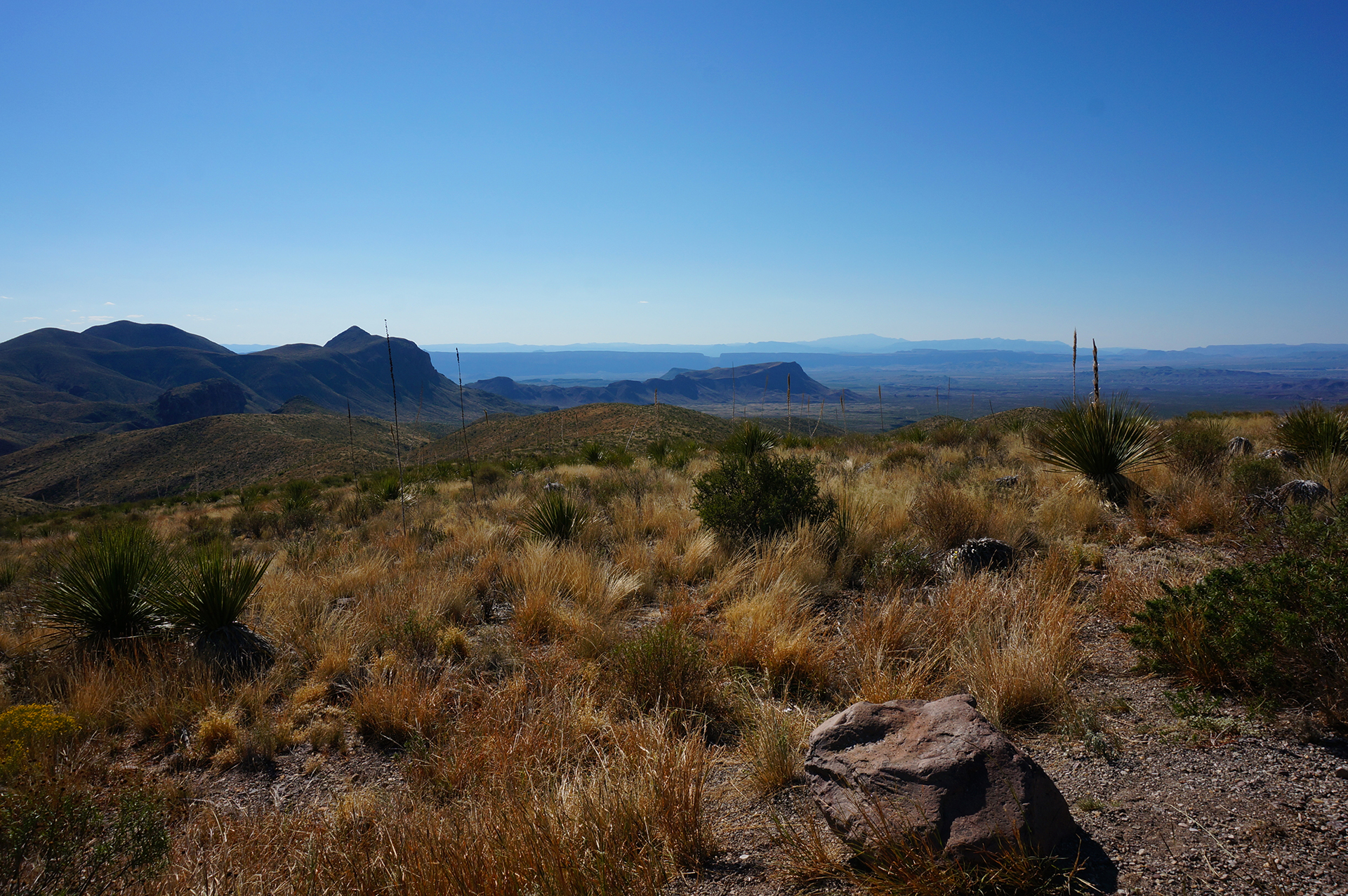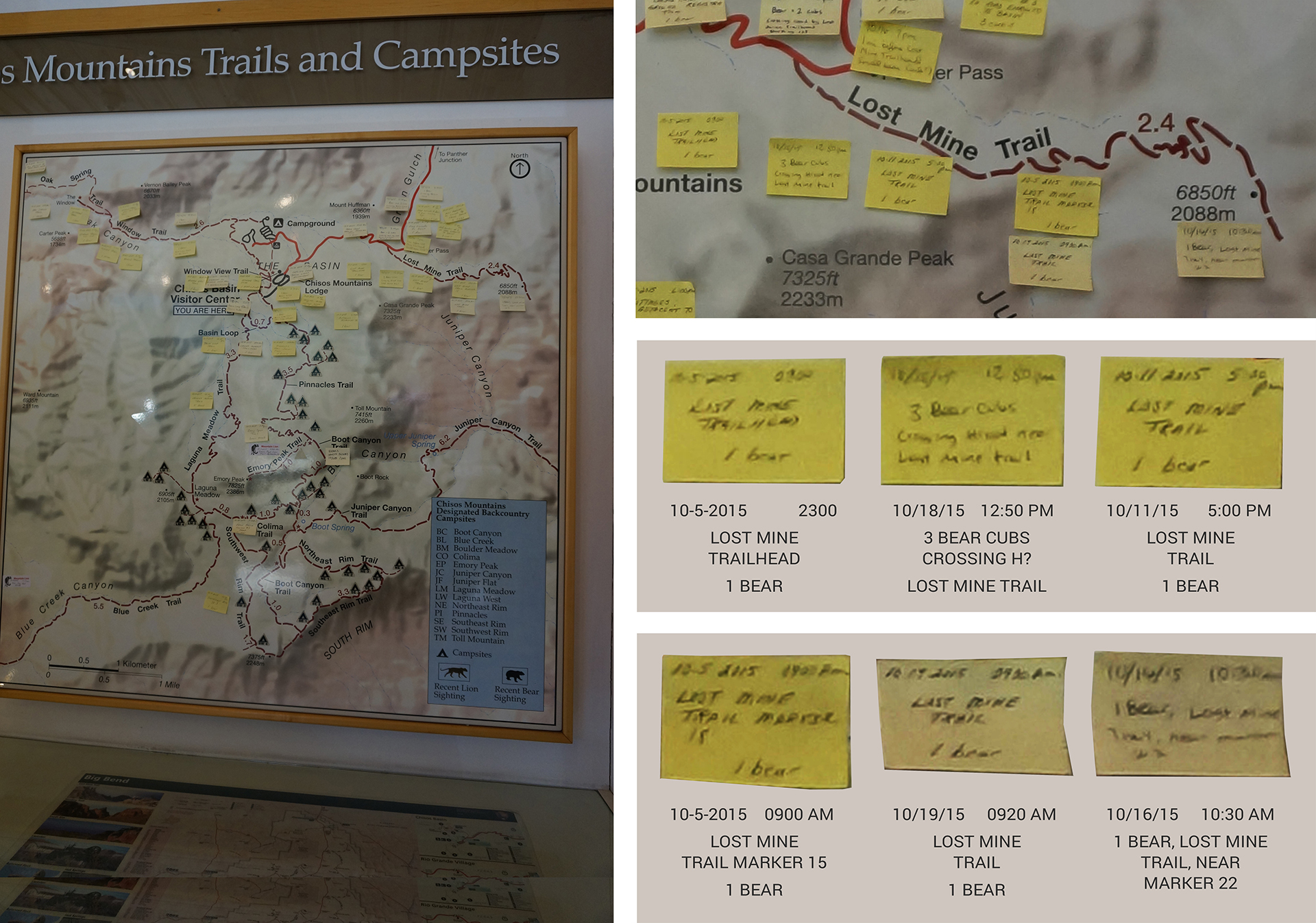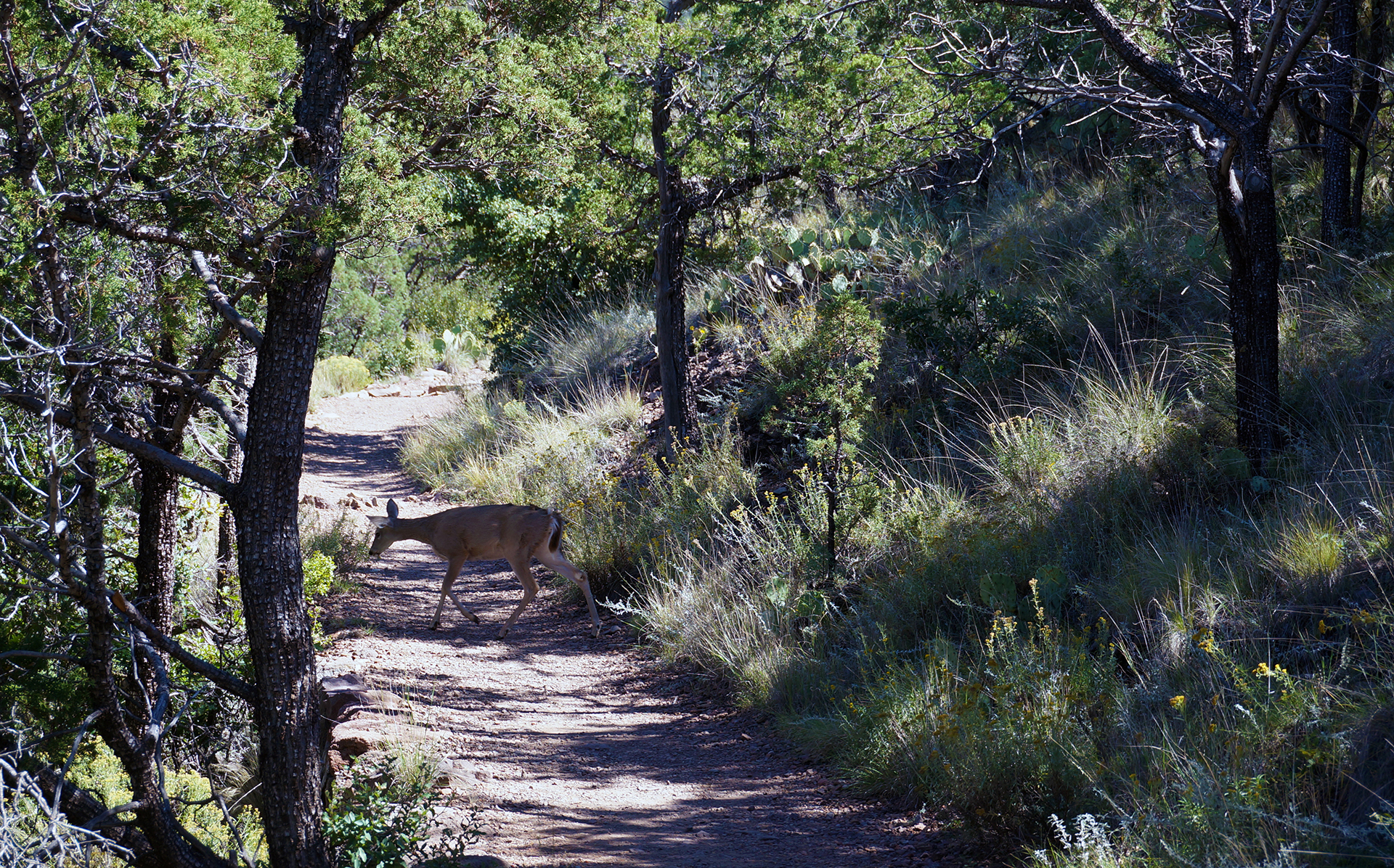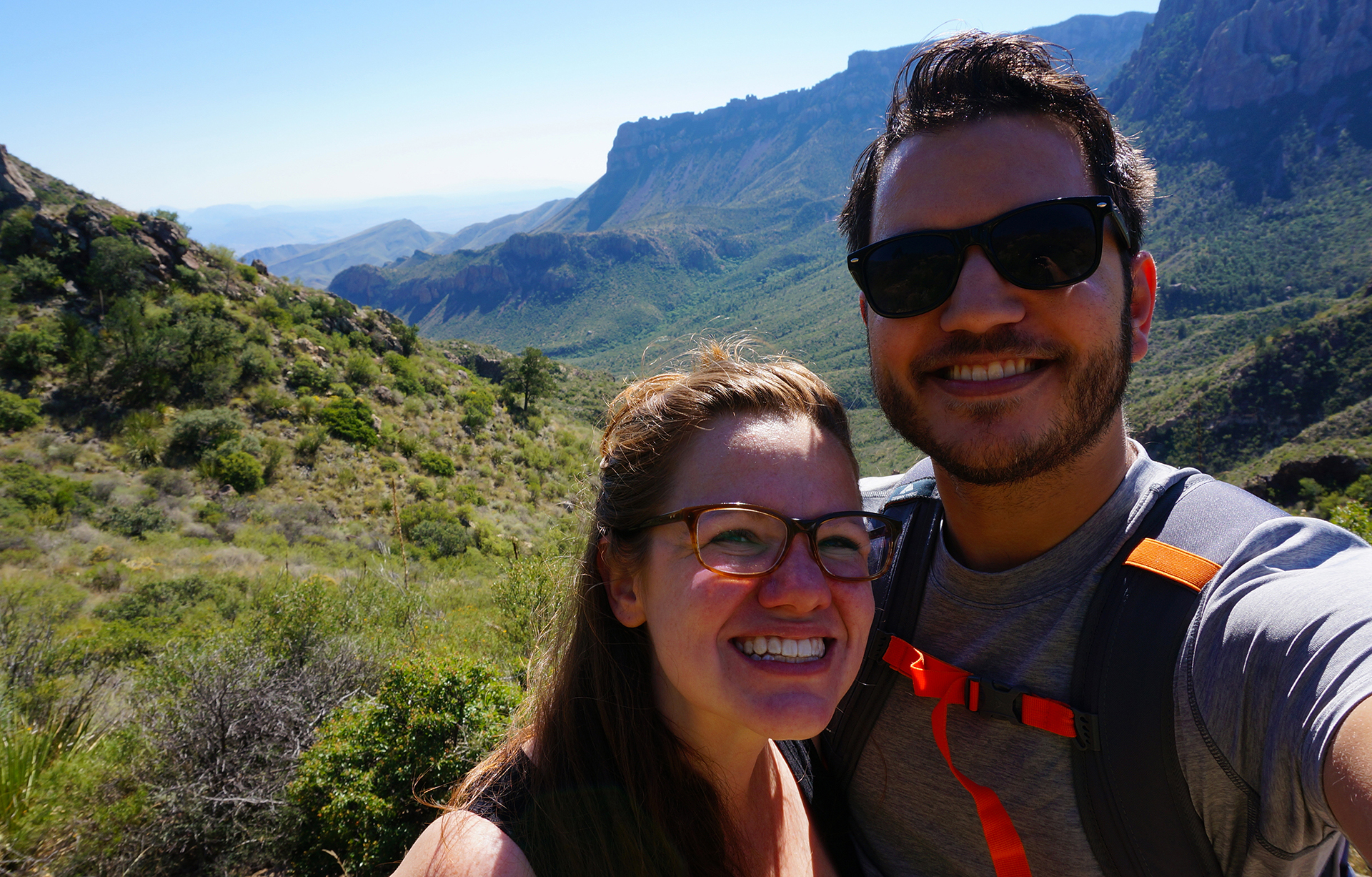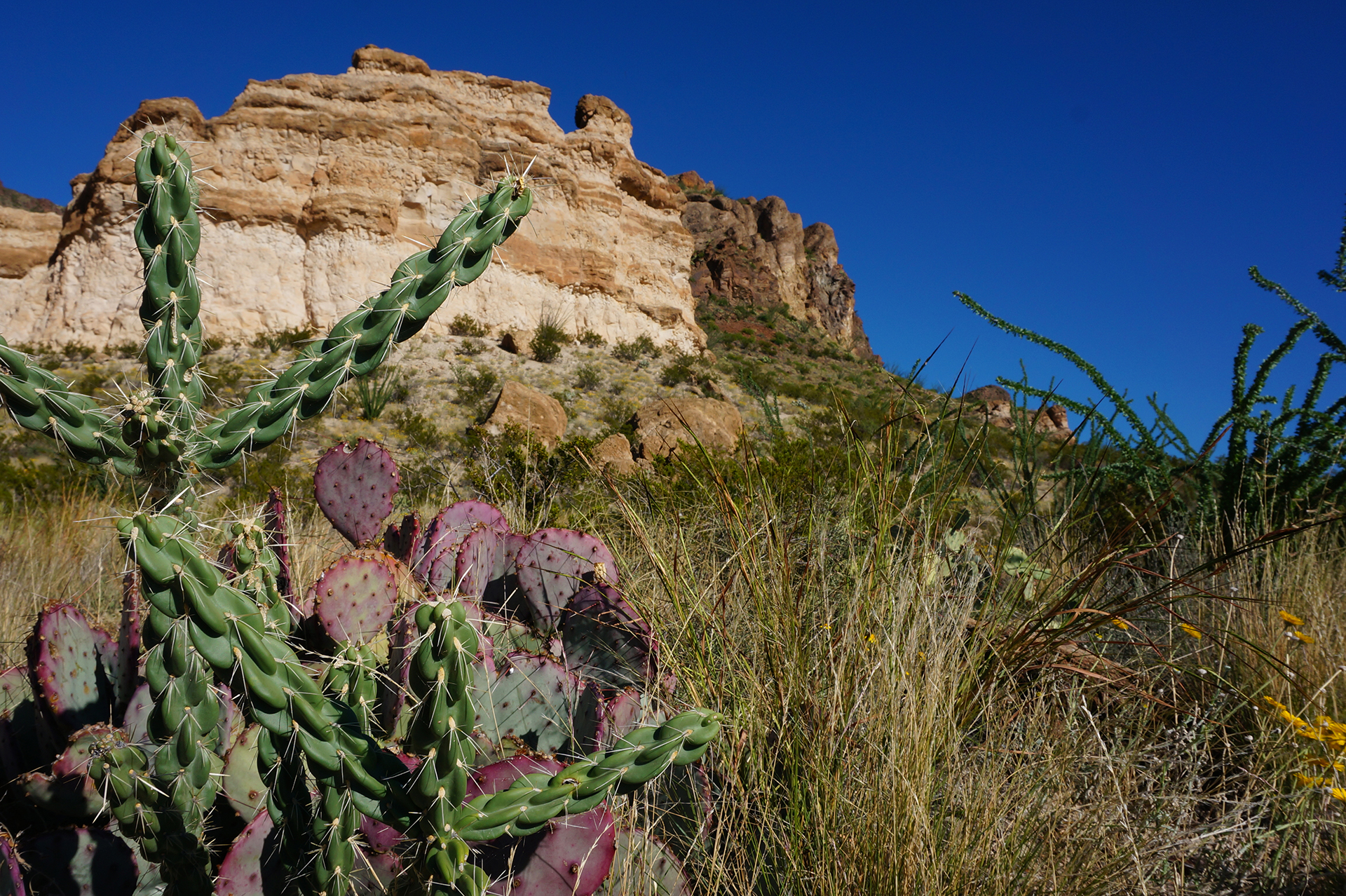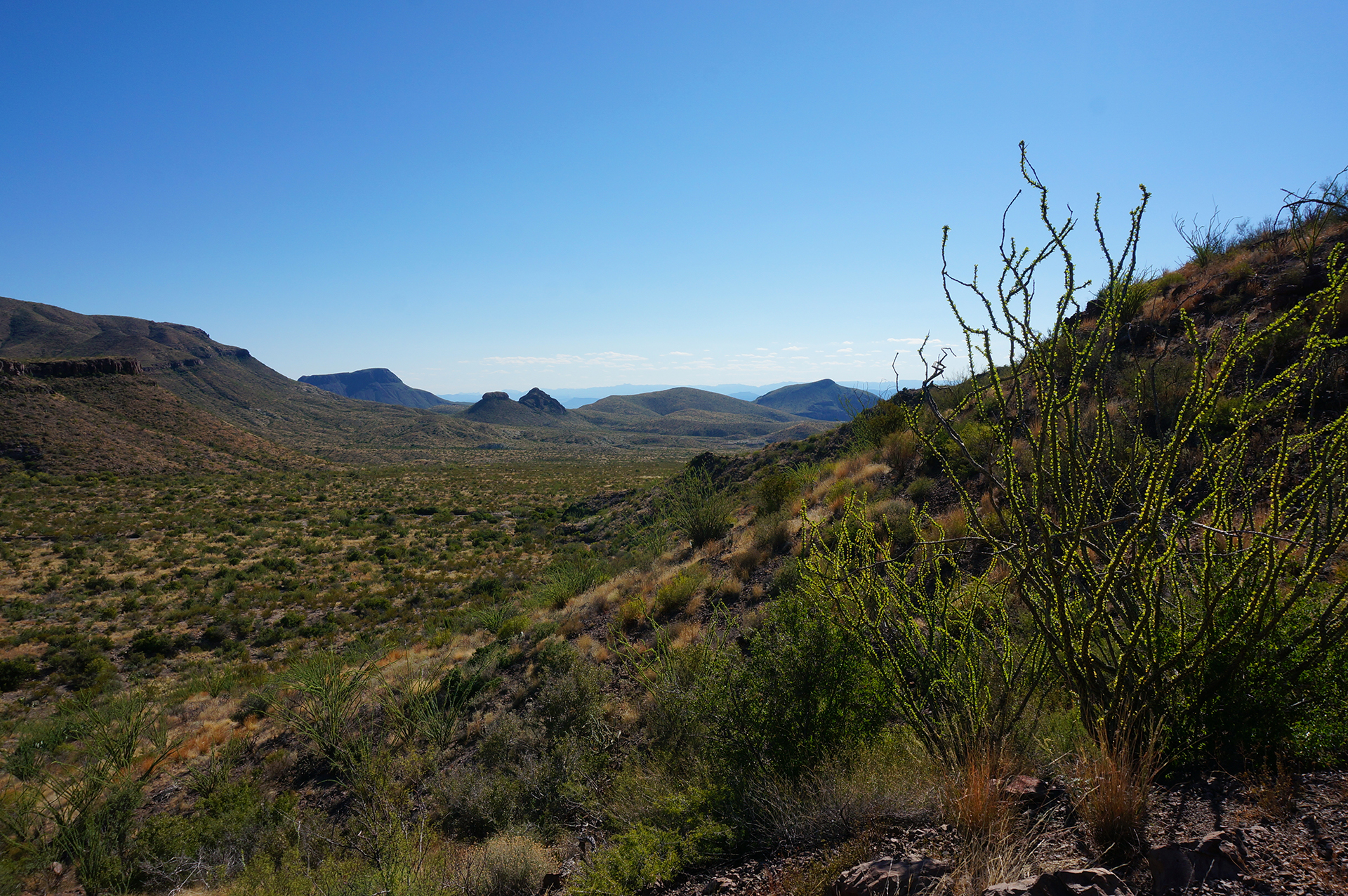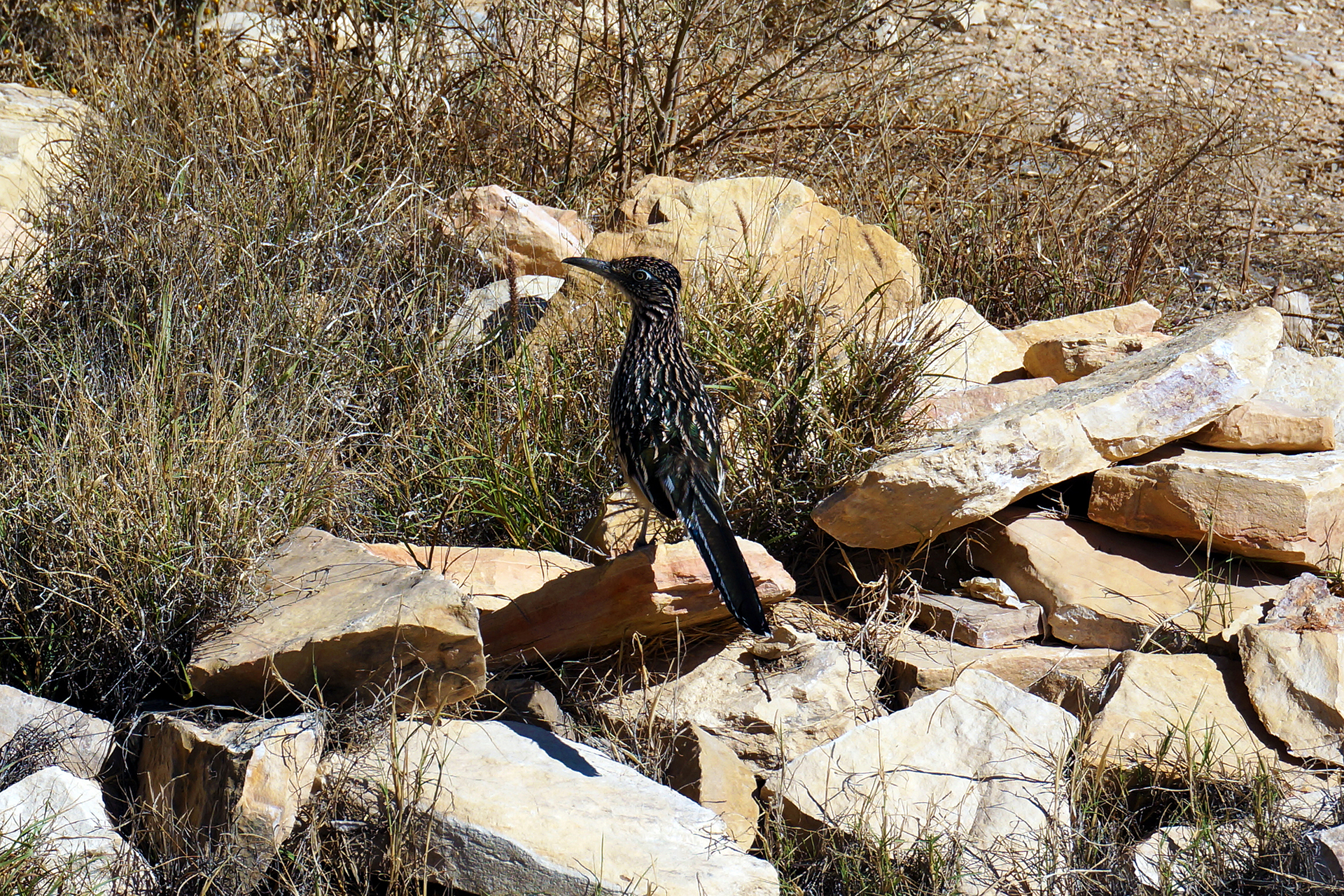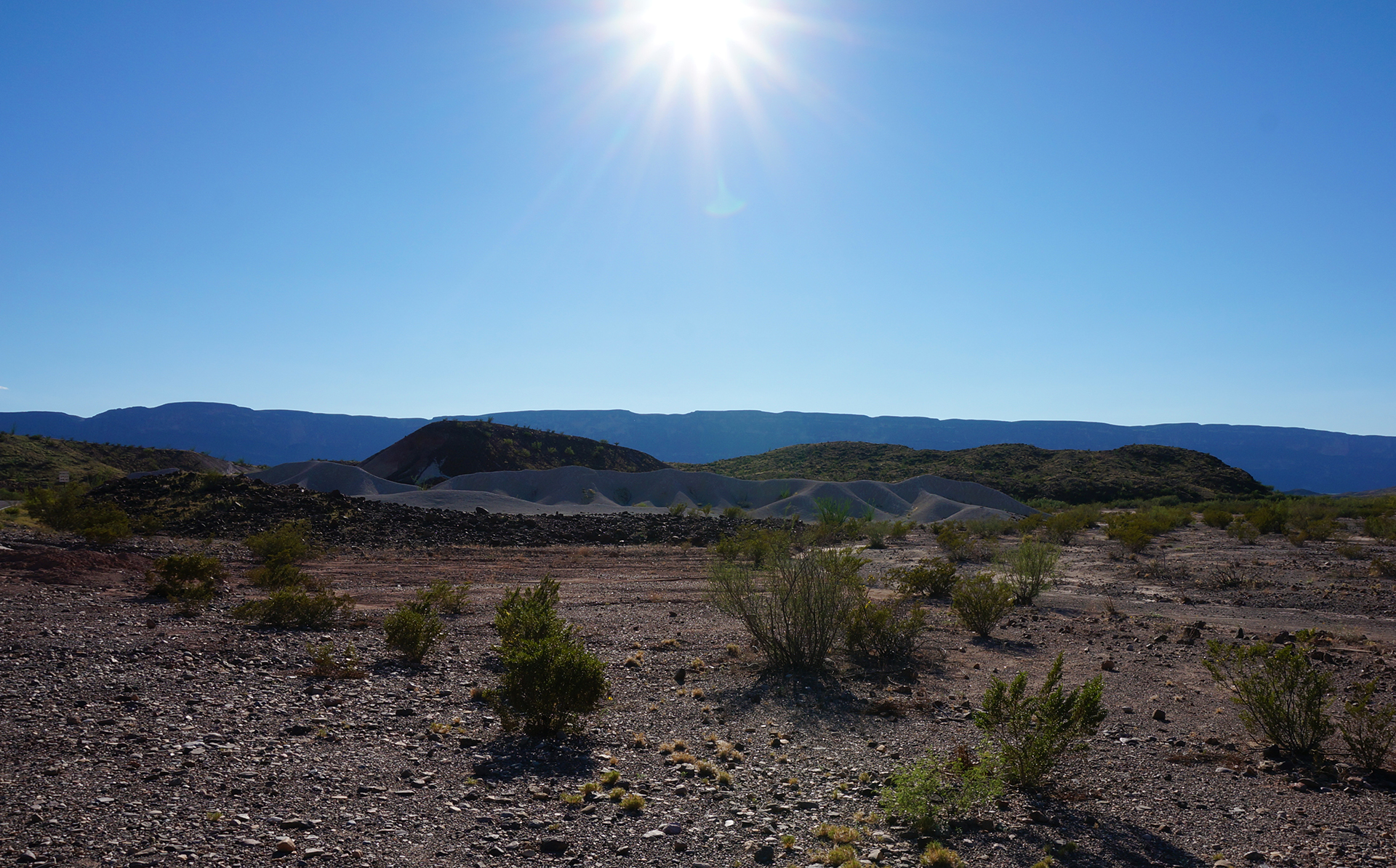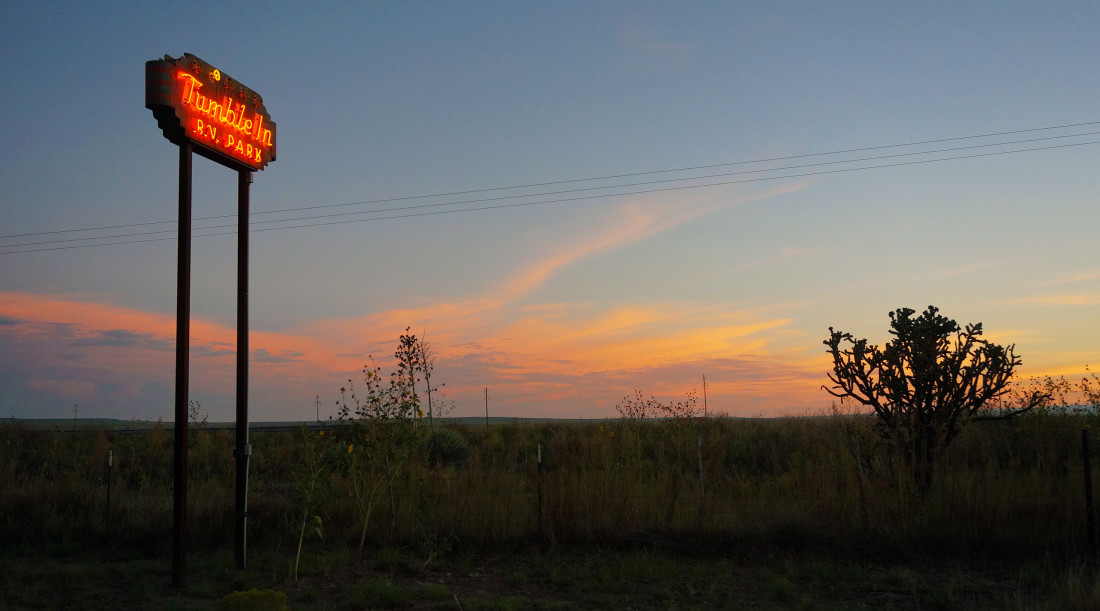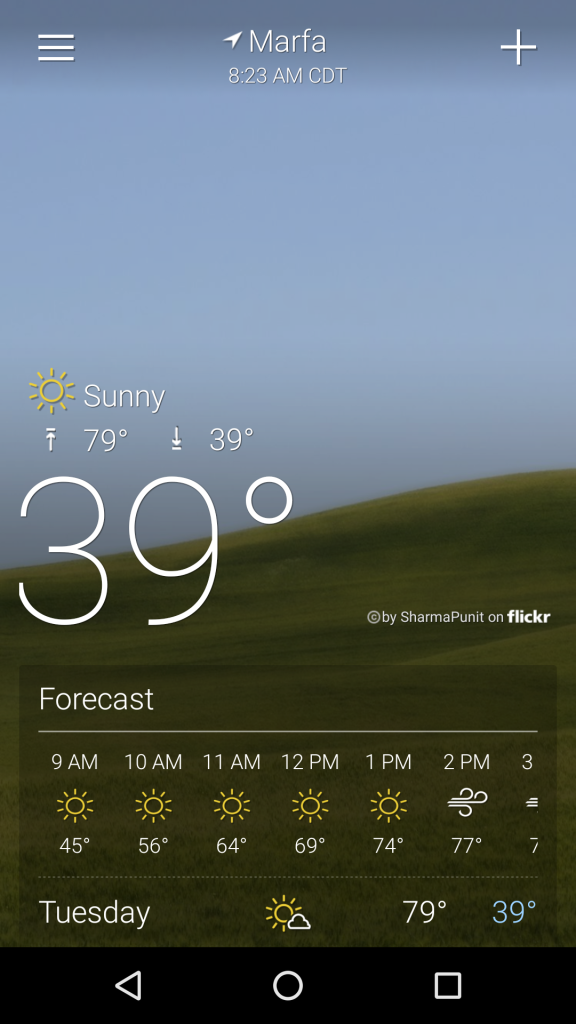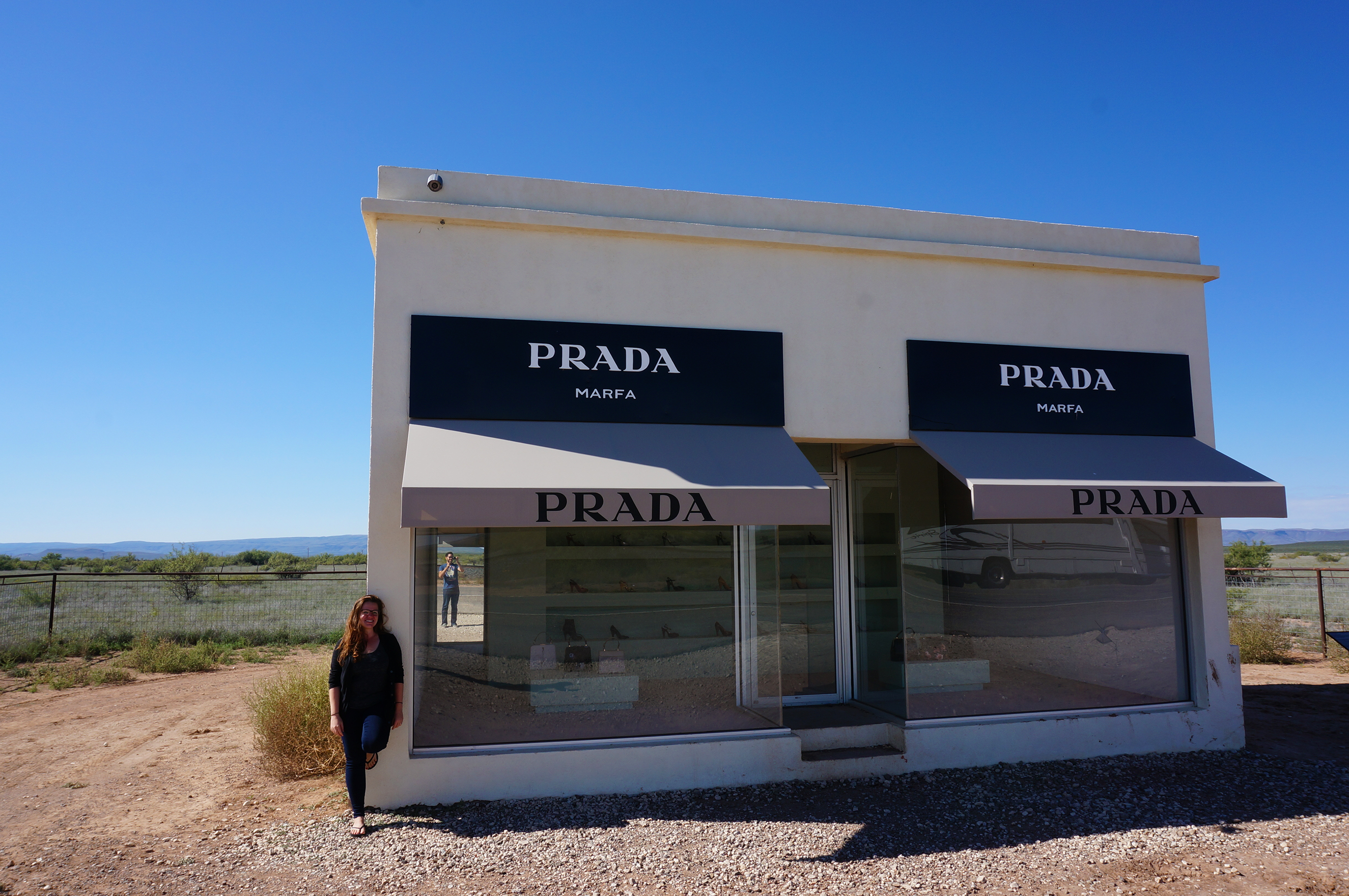Week 17.1: Around The Big Bend
We talked in our last blog post about our week in Marfa, a cool desert art town in the middle of nowhere, but our day trip from Marfa to Big Bend National Park deserved its own post. Big Bend is a remote desert wonderland, a giant wilderness preserve chock full of crazy mountains, beautiful vistas, and incredible surprises.
It’s so spectacular, it nearly made us sick.
Location, Location, Location
Let’s start with location: to say Big Bend is “remote” does not do it justice. The park is about 100 miles south of Marfa, which we have already established is in the middle of nowhere, so it is fair to say that Big Bend is 100 miles south of the middle of nowhere. You might call it the edge of nowhere.
The edge of the edge of nowhere is the Rio Grande, which is also the U.S.-Mexico border. The other edges are desert. There are few roads that lead to Big Bend, and the closest airport of any size is in El Paso. The closest “city” is Alpine, Texas, population 6,000, about an hour away. As you will see, the only nearby town, Terlingua, is part ghost.
Suffice it to say, getting to Big Bend is not an easy task, and we saw few other people when we visited (probably less than 100 total). Adding to the feeling of isolation is the park’s huge size: about 800,000 acres, slightly larger than Rhode Island. Unlike Rhode Island, of course, there are no cool hippy markets or walks along fabulous oceanside mansions, but on the plus side, there are a lot of bears.
Wait. Is that really a plus?
Ye Olde Ghost Towne
Our first stop on the way to Big Bend was at Terlingua, a ghost town with a twist. Terlingua was once a mining community, before it went bust, and the ruins of the town still remain, slowly decaying in the desert. Spooky ghost town graveyard? Sign us up.
Terlingua’s twist is that some flesh-and-blood humans still live there, right alongside the ruins. These hardy folk provide services to park entrants and visitors to the edge of nowhere, running a few restaurants, a cafe, and a gift shop. We might have thought they were ghosts too, but no ghost would have the gumption to charge $4.50 for a large iced coffee. (We would have been mad except that the coffee was delicious, and also, there were no alternatives within 60 miles.)
One of the few shops in town is an art gallery, and surprisingly (?), they had some cool sculptures on display outside. Our favorite was a piece called “Blow Out Survivor,” which the accompanying text explained was created from the melted remains of a natural gas well that caught fire. It burned for three days, and at the end, portions of the crankshaft, engine, and gearing were fused together.
We don’t have a gas well, but we were reliant on modern engineering, in the form of our poor Honda Fit. The question of whether it would be “blowout” or “survivor” was yet to come.
Bear Patrol
After we had finished being gouged by the local merchants, we headed into the park itself. On the way in, we got to live the dream of anyone who has ever visited a National Park: we bought a National Parks Pass! $80 for one years’ free access to every federal park and national monument. Access fees are normally $10-$25, so it’s a decent deal if you plan to visit 4 or more parks in a year. It’s an extraordinarily great deal if you do something crazy like, say, quitting your job to travel around in an RV for a year.
And so, pass in hand, we were ready to Big Bend it like Beckham. As we mentioned before, the park is massive, but there are essentially three distinct regions: mountain, desert, and river. Part of the charm lies in how they all pile up on top of each other, particularly the mountains and the desert.
The remainder of the charm is how stinking beautiful it all is.
Our first stop was at the visitor center, located in the mountains. We had planned our trip to Big Bend the way we usually plan things – which is to say, not at all – so we asked about the hikes and the best places to see. While there, we noticed a map on the wall with lots of yellow sticky notes:
The sticky notes turned out to be recent bear sightings. We ended up doing the Lost Mine hike, which is relatively short but offers an amazing view of the nearby valleys. As you can see, the hike also was smack dab in the middle of a field of bear-related post-it notes, but we trusted to blind luck and nobody got mauled, not even a little. There was a tense moment where we heard leaves rustling right next to us on the trail – a moment in which we considered whether cacti could be used as a weapon – but it just turned out to be a family of deer.
After catching our breath and cursing Bambi, we continued up the trail and were treated to some spectacular views.
However, the Lost Mine hike is where we discovered one of the iron laws of hiking: if you ever start to feel like a badass, for example by hiking up a mountain full of bears 100 miles south of the middle of nowhere, you will immediately be disabused of that notion. In this case, it was via the couple that passed us, with an infant strapped to their back, hardly breaking a sweat.
We really wanted to ask why you would ever bring a baby to Big Bend, but they seemed like they knew what they were doing. Instead we just had them take a picture of us, shortly before before they continued on the trail and we wussed out and headed back. Thanks guys!
Just Deserts
After a picnic lunch, we headed down out of the mountains and began exploring the rest of the park. Or, at least, the small slice of it we could see in one day. For two people raised in the temperate Northeast, the desert sights were fascinating.
Colorful mountains and cacti!
Endless wilderness!
Road runners! (!!!)
It’s nearly impossible to capture the grandeur and the magic of Big Bend; whatever you’re picturing, it’s much cooler than that.
Unfortunately, we ran into a small, slightly murderous issue. A day that started off comfortably warm, around 70 degrees, continued to grow hotter as the sun progressed across the sky. By mid-afternoon it was approximately 90 degrees, and even though the park is mostly traversed by car, we had spent a deceptively long amount of time walking around at each of the different stops.
Dehydration is always a special concern in the desert, because of the heat and the sun, but it can sneak up on you. Your sweat evaporates so quickly in the intensely dry air that you don’t realize you’re sweating. We had brought two Nalgene bottles full of water, but they were draining at an alarming rate, and the extreme size of the park meant that we were miles away from refilling stations.
Oh, and remember how we mentioned we don’t always super-plan ahead? Yeah, well, it’s normally fine, but every once in a while, it really bites us in the ass. This was one of those times, because we stupidly split a bottle of wine the night before we went to Big Bend. There was probably a good reason for it, like being a Monday, but we were definitely a bit dehydrated before we ever arrived. Combine with the sun and the heat and that oh-so-dry air, and you’re gonna have a bad time.
Well, one of us, anyway. We both have our strengths and weaknesses: Jake doesn’t get blisters or sunburns, and he can open jars, but he’s bad with heights, or anything requiring “stamina” or “dexterity.” Heather is pale like a ghost and can’t reach the top of our cabinets, but she’s graceful and a trooper, and, as it turns out, immune to dehydration. So she continued driving and taking photos of the beautiful landscape, as Jake slowly curled into a ball in the passenger seat.
We did eventually get more water, at one of the park’s campgrounds – after first refilling a bottle from a bathroom faucet with water so awful-tasting, it must not have been potable – but it was a little too late, and things were progressing from bad to worse. Our final stop of the day was the beautiful Santa Elena Canyon, split by the Rio Grande and therefore standing in both the United States and Mexico. Heather wanted to ford the river for more photos, but the shadows were growing long, so we decided to head back.
A Bump In The Night
Just one problem: actually getting back.
You see, the Big Bend scenic drive is about 45 miles long, and although it looks like a loop, the paved part ends at Santa Elena. The final leg of the loop is actually a dirt road, recommended for four-wheel drive cars only, although a ranger had told us regular cars (like our Fit) drive on it all the time. There’s no other exit there, so the only options were to drive an hour back the way we came to the park entrance, or take a short, 12-mile drive over Old Maverick Road, which is unpaved. (lower left on this map)
With Jake feeling really awful, we picked the dirt road. Let us advise you if you ever visit Big Bend and face a similar scenario: do not pick the dirt road. Why, you ask? Well, it’s more like a “loose fist-sized rocks” road, and every single one of the twelve million bumps will (1) cause you to think your tires are going to explode, just like that gas well in Terlingua, leaving you stranded in the desert emptiness; and (2) make your sick passenger’s stomach do flipflops, to the point where you both begin to wonder whether throwing up in a National Park is a violation of federal littering laws.
Oh, and because the road is in such horrible condition, your max speed will be something like 10 miles per hour, meaning that the route is actually slower than just driving back on the well-maintained, non-tire-exploding scenic drive. Except you’re also racing the setting sun, because the only thing more difficult than driving on that spin cycle of a road is doing it in the all-encompassing darkness of night in a desert National Park located 100 miles south of the middle of nowhere.
Not to spoil the ending, but we did eventually make it out alive, thanks to Heather’s skillful driving, a Honda Fit that didn’t quit, and our old friend, blind luck. Plus, Jake avoided littering in a National Park! Once we made it back to Terlingua, some general store aspirin and Pepto Bismol set him right as rain, and the drive back was smooth sailing (emphasis on smooth).
We finished off a looooong day with food from the Sonic Burger in the big city of Alpine, tired but happy. Big Bend is an extraordinary place, but it will likely be a long time before we go back – which is just fine with Jake.
RECENT NEWS
What’s now: We are leaving Morro Bay to visit Pinnacles National Park. Another notch for the National Parks Pass!
What’s next: We’ve got a few short stays planned, because everything in California is brutally expensive. Monterey (and Big Sur), San Francisco, and then YOSEMITE!
Obligatory social media self-promotion: If you want to follow along and you haven’t yet, please Like us on Facebook and/or follow us on Twitter (@NothingMundane) and/or Instagram (NothingMundane) to make sure you get all the updates. We promise, no Big Bend sink water.
Shamefully missed a prior post? We made a list of the most recent ones, just for you. To see every road trip blog post, click here.
Next Post: Weeks 18-21(ish): Docked in El Paso

